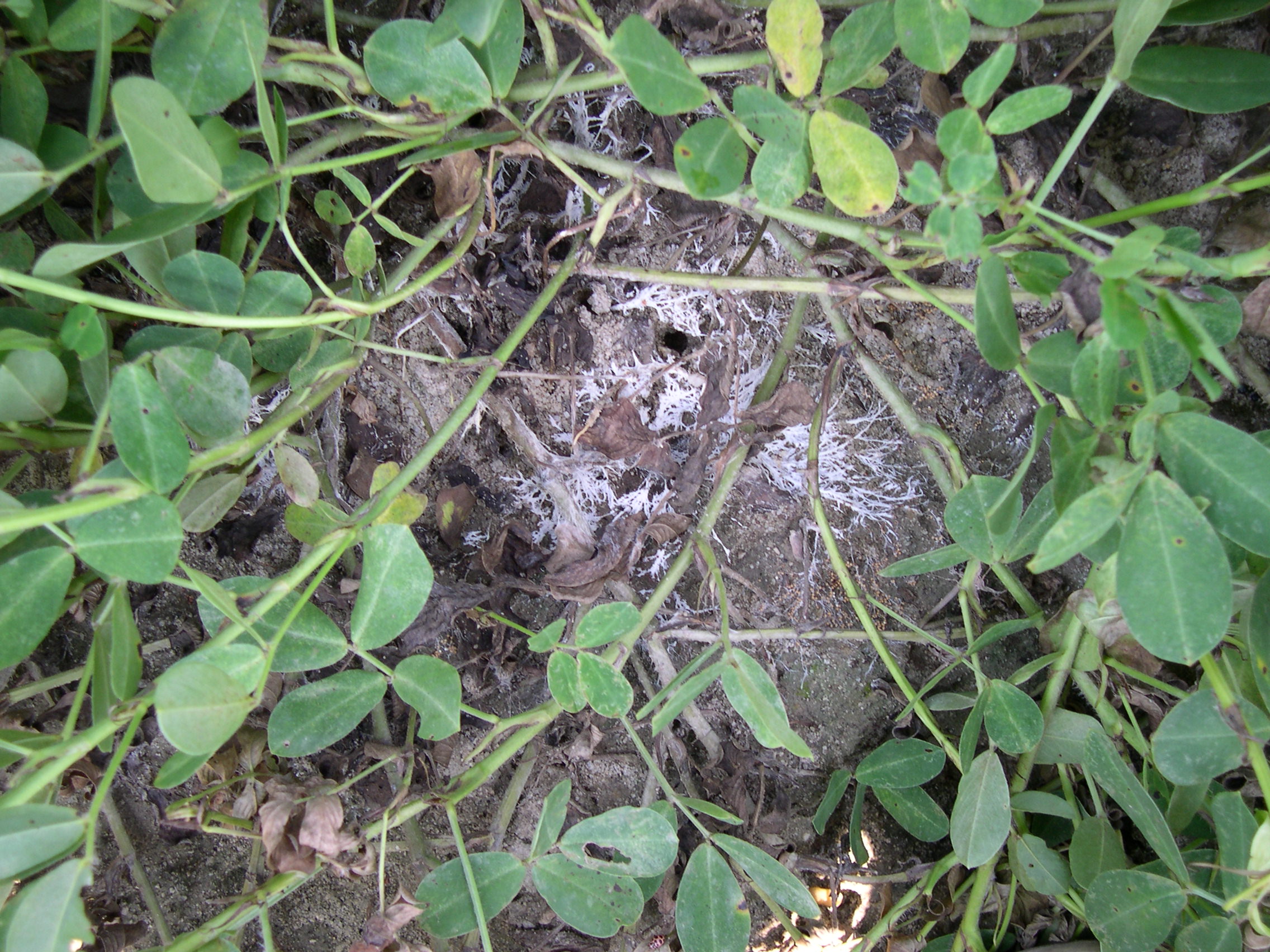Mid-Season Peanut Disease Control and Disease Advisories
go.ncsu.edu/readext?367434
en Español / em Português
El inglés es el idioma de control de esta página. En la medida en que haya algún conflicto entre la traducción al inglés y la traducción, el inglés prevalece.
Al hacer clic en el enlace de traducción se activa un servicio de traducción gratuito para convertir la página al español. Al igual que con cualquier traducción por Internet, la conversión no es sensible al contexto y puede que no traduzca el texto en su significado original. NC State Extension no garantiza la exactitud del texto traducido. Por favor, tenga en cuenta que algunas aplicaciones y/o servicios pueden no funcionar como se espera cuando se traducen.
Português
Inglês é o idioma de controle desta página. Na medida que haja algum conflito entre o texto original em Inglês e a tradução, o Inglês prevalece.
Ao clicar no link de tradução, um serviço gratuito de tradução será ativado para converter a página para o Português. Como em qualquer tradução pela internet, a conversão não é sensivel ao contexto e pode não ocorrer a tradução para o significado orginal. O serviço de Extensão da Carolina do Norte (NC State Extension) não garante a exatidão do texto traduzido. Por favor, observe que algumas funções ou serviços podem não funcionar como esperado após a tradução.
English
English is the controlling language of this page. To the extent there is any conflict between the English text and the translation, English controls.
Clicking on the translation link activates a free translation service to convert the page to Spanish. As with any Internet translation, the conversion is not context-sensitive and may not translate the text to its original meaning. NC State Extension does not guarantee the accuracy of the translated text. Please note that some applications and/or services may not function as expected when translated.
Collapse ▲At least one fungicide application for leaf spot has been made to most of the peanut crop by now. Most fields are ready for their second or third fungicide application. These are the most critical sprays for control of southern stem rot.
Symptoms of stem rot include wilting, starting with single branches, and slightly sunken brown lesions (dead areas) on stems or crowns where they come in contact with the soil. The coarse, fan-shaped growth of the fungus may be visible on the soil surface and affected plant parts. Round tan-to-brown sclerotia about the size of bb’s may also be present. However, damage can occur underground even when symptoms or fungus growth are not evident, which is why we recommend routine use of fungicides that control this disease. Other important control measures include planting a partially resistant cultivar (Bailey), and avoiding rotations of peanuts with vegetables, melons, tobacco, or soybeans.
During the period from mid-July to late August, susceptible cultivars will benefit from two applications of a fungicide that controls stem rot, while the more resistant Bailey will benefit from at least one application. Among the leaf spot fungicides that will also control southern stem rot are Provost, Fontelis, Abound, and Headline. We are still evaluating Priaxor against stem rot, but expect it to perform at least as well as Headline. Note that for most of these fungicides, the rates needed to control southern stem rot are higher than those needed for leaf spot control alone.
Convoy and tebuconazole also are effective against stem rot but must be used with a fungicide that controls leaf spots. If you are using Convoy or tebuconazole, mix with at 1 to 1.5 pints per acre of Bravo (or generic chlorothalonil) or 6 to 9 oz per acre of Headline. Remember that only two applications of a group 11 fungicide (Headline, Abound, Priaxor, Evito, or generic equivalents) should be made per season.
Rainfall across North Carolina’s peanut production region has been variable. Many areas have had ample or excess rain, but rain has been below normal in others. In general, plants suffering from water stress are a good indication that conditions are not favorable for leaf spot. Applying a leaf spot fungicide in dry weather is unnecessary and can increase the risk or severity of spider mite outbreaks. Delay fungicide applications until leaf spot advisories indicate that conditions are again favorable for disease.
Sclerotinia blight has been found in some of the wetter parts of the state and conditions remain favorable in those areas. Fungicide sprays are most beneficial at the first sign of a disease outbreak. Keep your eye on Sclerotinia advisories but always rely on careful, regular scouting to stay on top of this disease.
See the North Carolina Agricultural Chemicals Manual http://ipm.ncsu.edu/agchem/agchem.html for all fungicide rates and additional details. Additional photos of peanut diseases can be found here (pdf).



